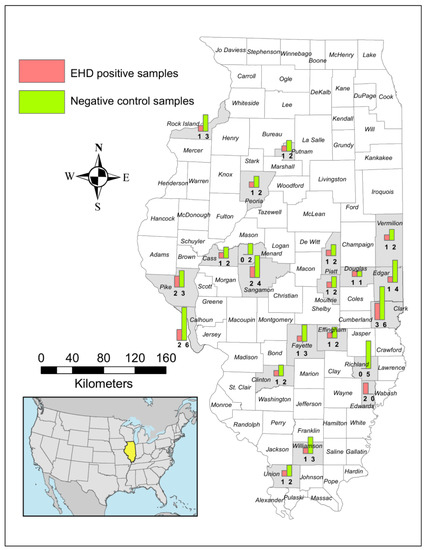2023-02-23 イリノイ大学アーバナ・シャンペーン校
◆イリノイ大学の科学者が、流行性出血性疾患(EHD)に対する感受性に関連するシカの遺伝子変異を発見しました。
◆TLR3は、免疫細胞の細胞内小器官の膜を覆うタンパク質で、二本鎖RNA(dsRNA)ウイルスを認識するのに役立っています。EHDの原因となる二本鎖RNAウイルスなどが細胞内に侵入すると、TLR3は宿主の最初の免疫防御機能を活性化し、炎症を引き起こして他の免疫系を活性化させる。
◆EHDに感染したシカと感染していないシカのTLR3の塩基配列を調べたところ、一塩基多型(SNPs)と呼ばれるDNAの可変部位が多数見つかり、そのうちの2つのSNPsは、EHDに感染したシカと感染していないシカで有意に異なっていた。そのうちの2つのSNPは、感染していないシカで有意に多く見られた。
◆多くの地域では、ウイルスを媒介するミミズの生活環に適した環境条件のもと、3〜5年ごとに大発生している。ミミズは、干ばつ時にシカが水を飲む池や水たまりの下の泥の中で幼虫の時期を過ごします。通常、夏の終わりにこれらの水源が干上がると、ミミズの生息地が露出し、成虫が出現してシカに噛み付き感染する。このサイクルは、局地的な雨や寒波によって中断されることがあるため、毎年発生するわけではありません。
◆研究者らは、EHDはミズカマダラに刺されたり、感染したシカの肉を食べたりしても、人間やペットには感染しないことを強調している。
◆野生動物管理者がこのサイクルを乱し、自然の生息地での発生を防ぐためにできることは多くないが、研究チームは、この病気の遺伝的背景を理解することは有用であると述べている。理論的には、飼育されているシカの群れからサンプルを採取してEHDに対する脆弱性の程度を明らかにし、野生の群れからは狩猟シーズンとEHD発生シーズンにサンプルを採取して、管理者や一般市民に将来のリスクについて情報を提供することが可能であろう。
<関連情報>
- https://aces.illinois.edu/news/deer-protected-deadly-disease-newly-discovered-genetic-differences
- https://www.mdpi.com/2073-4425/14/2/426
イリノイ州野生のオジロジカ(Odocoileus virginianus)におけるToll様受容体3遺伝子の変異が疫学的出血性疾患に与える影響について The Impact of Variation in the Toll-like Receptor 3 Gene on Epizootic Hemorrhagic Disease in Illinois Wild White-Tailed Deer (Odocoileus virginianus)
Jacob E. Wessels,Yasuko Ishida,Nelda A. Rivera,Spencer L. Stirewalt,William M. Brown,Jan E. Novakofski,Alfred L. Roca and Nohra E. Mateus-Pinilla
Genes Published: 8 February 2023
DOI:https://doi.org/10.3390/genes14020426

Abstract
Epizootic hemorrhagic disease (EHD) leads to high mortality in white-tailed deer (Odocoileus virginianus) and is caused by a double-stranded RNA (dsRNA) virus. Toll-like receptor 3 (TLR3) plays a role in host immune detection and response to dsRNA viruses. We, therefore, examined the role of genetic variation within the TLR3 gene in EHD among 84 Illinois wild white-tailed deer (26 EHD-positive deer and 58 EHD-negative controls). The entire coding region of the TLR3 gene was sequenced: 2715 base pairs encoding 904 amino acids. We identified 85 haplotypes with 77 single nucleotide polymorphisms (SNPs), of which 45 were synonymous mutations and 32 were non-synonymous. Two non-synonymous SNPs differed significantly in frequency between EHD-positive and EHD-negative deer. In the EHD-positive deer, phenylalanine was relatively less likely to be encoded at codon positions 59 and 116, whereas leucine and serine (respectively) were detected less frequently in EHD-negative deer. Both amino acid substitutions were predicted to impact protein structure or function. Understanding associations between TLR3 polymorphisms and EHD provides insights into the role of host genetics in outbreaks of EHD in deer, which may allow wildlife agencies to better understand the severity of outbreaks.


